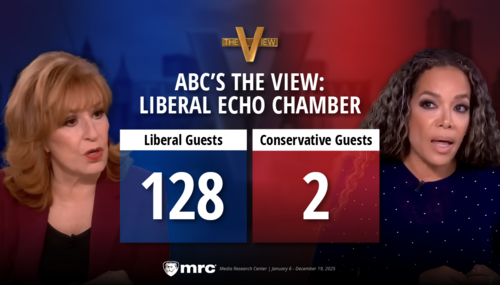At the New York Times Thursday morning, reporter Choe Sang-Hun's covering the funeral for late North Korean dictator Kim Jong Il made it clear to readers that it "The funeral, and the mourning, appeared to have been meticulously choreographed by the government." Meanwhile, over at the Associated Press (saved here at host for future reference, fair use and discussion purposes), a story involving five reporters left the impression that the outpouring of grief was genuine and broadly shared.
Here are key paragraphs relating to that aspect of the funeral coverage, first from the Times (bolds are mine throughout this post):
North Korean Mourners Line Streets for Kim Jong-il’s Funeral
On the surface, the funeral appeared to proceed with a totalitarian choreography.
Kim Jong-un walked with one hand on the hearse and the other raised in salute. Neat rows of soldiers in olive-green uniforms stood, hats off and bowing, in front of the Kumsusan mausoleum, where Kim Jong-il’s body had been lying in state since his death was announced on Dec. 19.
When the funeral motorcade stopped before them at the start of a 25-mile procession through Pyongyang, they gave a last salute and a military band played the national anthem. Mr. Kim and other top officials did not walk the entire route; from inside their limousines, they watched crowds of citizens and soldiers wailing along the boulevards under a cold, gray sky.
Soldiers appeared to lead the outpouring of grief. They beat their chests in tears, footage broadcast on state television showed. They flailed their hands, stomped their feet and shouted “Father, Father,” as the limousine carrying a gigantic portrait of a smiling Kim Jong-il on the roof crawled past the crowds, followed by the hearse bearing his coffin draped with a red flag. A phalanx of soldiers carrying various party and military flags followed.
In one scene, soldiers rushed to keep mourners from spilling onto the road. But even among the crowds, the intensity of grief — thus loyalty to the regime — seemed to vary; those standing farther from the road seemed less effusive.
... The funeral, and the mourning, appeared to have been meticulously choreographed by the government to strengthen the cult of personality underpinning the Kim family’s rule. State television and radio announcers exhorted North Koreans to uphold the family with their lives. They even attributed the heavy snow fall ahead of the funeral to the “heaven’s grief” over Kim Jong-il’s death.
An exhortation from the state's broadcasters in a totalitarian regime telling their country's residents "to uphold the family with their lives" would tend to be taken literally.
At the AP, verbiage relating to the mourners expressed none of the skepticism seen in the Times:
NKoreans salute, cry for late leader Kim Jong Il
North Korea's next leader escorted his father's hearse in an elaborate state funeral on a bitter, snowy day Wednesday, bowing somberly and saluting in front of tens of thousands of citizens who wailed and stamped their feet in grief for Kim Jong Il.
... Mourners in parkas lined the streets of Pyongyang, waving, stamping and crying as the convoy bearing his coffin passed. Some struggled to get past police holding back the crowd.
"How can the sky not cry?" a weeping soldier standing in the snow said to state TV. "The people ... are all crying tears of blood."
The dramatic scenes of grief showed how effectively North Korea built a personality cult around Kim Jong Il despite chronic food shortages and decades of economic hardship.
As the Times's Sang-Hun noted, the scenario was really one of "Mourn or else."
The Times doesn't get a total pass. While its story found space for the word "totalitarian" to describe the country's state of affairs, it failed to hang any kind of authoritarian label directly onto Kim Jong Il himself. The AP, also failed to label the dead dictator, but at least indicated that he "ruled with absolute power."
Several decades ago, one would have expected the Times to be the outlet gullibly relaying propaganda and the AP to exhibit at least a bit of skepticism. Today's result is the opposite of that. It's probably too much to hope for, but I'd like to think that the AP's subscribing news, radio and TV outlets will do a collective "What the ...?" when they see what Korea bureau chief Jean H. Lee and writers Hyung-jin Kim, Foster Klug, Scott McDonald and Sam Kim have produced.
(Image at top right, captioned "In memory of our Great Leader," is from "the Official Webpage of The Democratic People's Republic of Korea")
Cross-posted at BizzyBlog.com.




